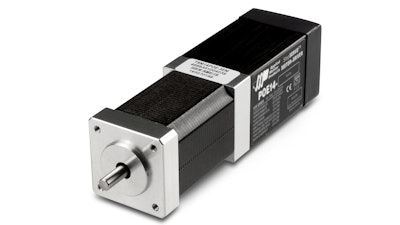
What is PoE?
PoE or Power over Ethernet is a standard for sending data and power over a standard Ethernet cable to low-wattage devices. In the IT industry, these devices are usually VoIP phones, security cameras and wireless access points. In the factory automation industry, motion control devices like motor drives and small integrated motors also can use this technology.
How Does PoE Work?
Currently, the most common PoE implementations work with standard Ethernet cable, the same type found in offices and buildings around the world. There are 8 wires in the Ethernet cable but only 4 are used to transmit data. PoE leverages the 4 unused wires in the Ethernet cable to transmit DC power.
Benefits
PoE devices can operate in remote, hard-to-reach and unpowered locations without the cost or hassle of running and installing new AC power lines. Ethernet cable is easier to install than electrical wiring and does not require special Ethernet wiring. Cat 5 to Cat 7A are approved for use with PoE, shielded or unshielded.
PoE is also plug-and-play. Ethernet equipment automatically talks to each other to ensure PoE power is delivered only to devices that accept it.
PoE Terminology
A PoE installation includes two principle pieces of equipment. The Power Source Equipment (PSE) provides power to one or more PoE devices on the network. The Powered Devices (PD) are the PoE devices on the network that receive power from the PSE.
Figure 1 outlines a typical installation where an Ethernet switch with PoE ports serves as the PSE. It provides power to an integrated motor (PD) with PoE functionality. The switch automatically detects that the integrated motor accepts PoE and provides power to it accordingly.
 Figure 1: An Ethernet network switch with integral PoE+ ports provides power and Ethernet communications to two remotely-mounted integrated motors. No other cables are required to power and control the motors.Applied Motion Products
Figure 1: An Ethernet network switch with integral PoE+ ports provides power and Ethernet communications to two remotely-mounted integrated motors. No other cables are required to power and control the motors.Applied Motion Products
Injectors and splitters are other types of PSEs. Often referred to as midspan PSE, they are installed between a non-PoE switch and the powered device. These types of PSE enable PoE device use in existing Ethernet networks where PoE-enabled switches are not available. Figure 2 shows an example of an installation with a midspan PSE.
 Figure 2: An Ethernet network switch with no PoE+ ports provides Ethernet communications to two remotely-mounted integrated motors, while midspan PSEs (PoE+ injectors) provide power to the motors.Applied Motion Products
Figure 2: An Ethernet network switch with no PoE+ ports provides Ethernet communications to two remotely-mounted integrated motors, while midspan PSEs (PoE+ injectors) provide power to the motors.Applied Motion Products
Motion Control with PoE
The specific application of motion control devices with PoE involves the use of small-wattage motors that can take advantage of the maximum power supplied by a PoE connection. One such product is a NEMA 14 frame integrated motor comprised of a step motor and encoder with integrated drive and controller electronics.
The integrated motor provides position, speed and torque control of the rotary or linear load coupled to its shaft. Motion control instructions are provided to the integrated motor over the four data lines within the Ethernet cable, while DC power is provided over the four unused wires.
The integrated motor supports common industrial Ethernet protocols such as Modbus TCP and EtherNet/IP, making it compatible with modern PLCs and machine controllers used in factory automation applications.
PoE Standards
Chart 1 shows the various PoE standards defined by IEEE. The most common standard used with integrated motors today is 802.3at, also known as PoE+, which provides the integrated motor with 25.5 W of continuous power.
PoE standards providing more than 25.5 W continuous at the PD also are available. These will soon lead to the use of larger motors in PoE applications.
 Chart 1: PoE standards currently defined by IEEE.Applied Motion Products
Chart 1: PoE standards currently defined by IEEE.Applied Motion Products






















